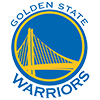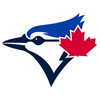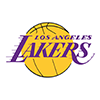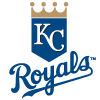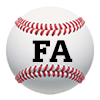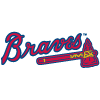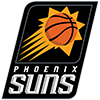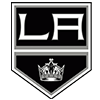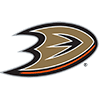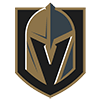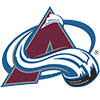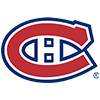The MLB season will likely be delayed at least two months. One of the repercussions is that the coldest two months will be excluded from the schedule. Granted, if the regular season extends past September, cooler weather will return. That said, one of the possibilities is for the extended schedule to be contested at neutral sites. Not to mention, there's a chance the whole season (whatever that ends up looking like) is played in warm weather sites. Regardless of what happens, losing April and May has a potentially big impact on park factors when they're broken down on a monthly basis.
The park factor calculation is designed to flesh out all biases, so the sole factor being measured is how the venue plays. As has been discussed previously, the bias isn't eliminated, but until alternate means of computing park indices are perfected (they're coming, likely based on Statcast data), using the indices as conventionally determined is better than not using them.
Park factors for any metric can be calculated. Runs, hits and homers are the most common examples, with strikeouts and walks underrated in their utility. Many assume runs and homers track proportionally. As will soon be illustrated, homers and runs are mutually exclusive. Hits and runs correlate better and many venues favor homers but suppress hits, and vice versa.
In order to reduce the variance from the residual bias, park factors are expressed as a three-year average. When a venue undergoes a major renovation, or a team moves to
The MLB season will likely be delayed at least two months. One of the repercussions is that the coldest two months will be excluded from the schedule. Granted, if the regular season extends past September, cooler weather will return. That said, one of the possibilities is for the extended schedule to be contested at neutral sites. Not to mention, there's a chance the whole season (whatever that ends up looking like) is played in warm weather sites. Regardless of what happens, losing April and May has a potentially big impact on park factors when they're broken down on a monthly basis.
The park factor calculation is designed to flesh out all biases, so the sole factor being measured is how the venue plays. As has been discussed previously, the bias isn't eliminated, but until alternate means of computing park indices are perfected (they're coming, likely based on Statcast data), using the indices as conventionally determined is better than not using them.
Park factors for any metric can be calculated. Runs, hits and homers are the most common examples, with strikeouts and walks underrated in their utility. Many assume runs and homers track proportionally. As will soon be illustrated, homers and runs are mutually exclusive. Hits and runs correlate better and many venues favor homers but suppress hits, and vice versa.
In order to reduce the variance from the residual bias, park factors are expressed as a three-year average. When a venue undergoes a major renovation, or a team moves to a new ballpark, only the seasons incorporating the change are included in the applied indices.
For reasons to be explained in a bit, a six-year review will be deployed here. Over that span, five venues have undergone changes: Angels Stadium (2018), Minute Maid Park (2017), Marlins Park (2016), Citi Field (2015) and PETCO Park (2015). Chase Field started using a humidor in 2018, while SunTrust Park opened in 2017. As such, data for those parks is used beginning with the above campaigns.
As detailed in 2020 Park Factor Notes, two venues -- Marlins Park and Oracle Park -- underwent renovations this offseason, while the Rangers will move into the brand new Globe Life Field. Since the ensuing discussion focuses on the variability of park factors in general, the data from this trio of venues will still be included.
Before delving into some park factor data, let's break down MLB cities in terms of average monthly temperature, as lower thermometer readings have been shown to suppress fly ball distance, producing fewer homers. The cities are divided into four groups: Cool, moderate, high and domes.
Cool Temperature Cities
April | May | Jun | July | Aug | Sept | |
| Minneapolis | 48 | 59 | 69 | 74 | 71 | 62 |
| Denver | 48 | 58 | 67 | 74 | 72 | 63 |
| Boston | 48 | 58 | 68 | 74 | 72 | 65 |
| Chicago | 49 | 59 | 69 | 74 | 72 | 65 |
| Detroit | 49 | 59 | 69 | 73 | 72 | 64 |
| Cleveland | 49 | 60 | 69 | 73 | 71 | 65 |
| Pittsburgh | 51 | 60 | 69 | 73 | 72 | 64 |
Moderate Temperature Cities
April | May | Jun | July | Aug | Sept | |
| New York City | 53 | 63 | 72 | 77 | 76 | 68 |
| Philadelphia | 54 | 64 | 73 | 78 | 77 | 69 |
| Baltimore | 54 | 64 | 73 | 78 | 76 | 68 |
| Kansas City | 55 | 65 | 74 | 78 | 77 | 68 |
| Washington D.C. | 57 | 66 | 75 | 80 | 78 | 71 |
| Oakland | 57 | 59 | 64 | 68 | 71 | 71 |
| Cincinnati | 57 | 66 | 75 | 78 | 77 | 70 |
| San Francisco | 57 | 59 | 61 | 61 | 63 | 64 |
| St. Louis | 57 | 67 | 76 | 80 | 79 | 70 |
Warm Temperature Cities
April | May | Jun | July | Aug | Sept | |
| Atlanta | 62 | 70 | 77 | 80 | 80 | 74 |
| San Diego | 62 | 65 | 67 | 71 | 72 | 71 |
| Arlington | 66 | 74 | 81 | 85 | 85 | 78 |
| Los Angeles | 63 | 66 | 69 | 73 | 74 | 73 |
| Miami | 76 | 80 | 83 | 84 | 84 | 83 |
Domes
April | May | Jun | July | Aug | Sept | |
| Milwaukee | 46 | 56 | 67 | 72 | 71 | 63 |
| Toronto | 46 | 57 | 67 | 72 | 71 | 63 |
| Seattle | 50 | 56 | 61 | 66 | 66 | 61 |
| Houston | 69 | 77 | 82 | 84 | 84 | 79 |
| Tampa | 72 | 78 | 82 | 83 | 83 | 82 |
| Phoenix | 73 | 82 | 91 | 95 | 94 | 88 |
Let's begin with some basic data, home run and runs indices for the past six seasons, followed by the average and standard deviations for each venue.
2014 – 2019 Home Run Indices
| Venue | 2014 | 2015 | 2016 | 2017 | 2018 | 2019 | Average | StDev |
| Chase Field (ARI) |
|
|
|
| 94 | 88 | 91 | 3.0 |
| SunTrust Park (ATL) |
|
|
| 94 | 80 | 104 | 93 | 9.8 |
| Camden Yards (BAL) | 94 | 136 | 104 | 119 | 112 | 124 | 115 | 13.6 |
| Fenway Park (BOS) | 72 | 96 | 104 | 80 | 96 | 86 | 89 | 10.8 |
| Wrigley Field (CHC) | 94 | 131 | 84 | 100 | 107 | 89 | 101 | 15.4 |
| Great American Ballpark (CIN) | 129 | 110 | 118 | 110 | 136 | 109 | 119 | 10.4 |
| Progressive Field (CLE) | 108 | 96 | 117 | 98 | 102 | 107 | 105 | 7.0 |
| Coors Field (COL) | 130 | 114 | 120 | 118 | 125 | 119 | 121 | 5.2 |
| Guaranteed Rate Field (CWS) | 103 | 110 | 113 | 118 | 96 | 126 | 111 | 9.7 |
| Comerica Park (DET) | 106 | 80 | 116 | 110 | 86 | 105 | 101 | 13.0 |
| Minute Maid Park (HOU) |
|
|
| 109 | 106 | 120 | 112 | 6.0 |
| Kauffman Stadium (KC) | 85 | 82 | 75 | 83 | 89 | 73 | 81 | 5.6 |
| Angels Stadium (LAA) |
|
|
|
| 115 | 101 | 108 | 7.0 |
| Dodgers Stadium (LAD) | 122 | 101 | 96 | 102 | 109 | 114 | 107 | 8.7 |
| Marlins Park (MIA) |
|
| 83 | 86 | 64 | 82 | 79 | 8.6 |
| Miller Park (MIL) | 117 | 140 | 113 | 103 | 113 | 107 | 116 | 11.9 |
| Target Field (MIN) | 99 | 105 | 98 | 114 | 92 | 86 | 99 | 8.9 |
| Citi Field (NYM) |
| 101 | 111 | 82 | 92 | 104 | 98 | 10.1 |
| Yankees Stadium (NYY) | 148 | 124 | 138 | 132 | 116 | 91 | 125 | 18.2 |
| RingCentral Coliseum (OAK) | 92 | 78 | 74 | 104 | 76 | 86 | 85 | 10.5 |
| Citizens Bank Park (PHI) | 118 | 114 | 114 | 139 | 120 | 116 | 120 | 8.7 |
| PNC Park (PIT) | 70 | 109 | 82 | 84 | 86 | 87 | 86 | 11.6 |
| PETCO Park (SD) |
| 110 | 92 | 81 | 96 | 88 | 93 | 9.7 |
| T-Mobile Park (SEA) | 110 | 92 | 116 | 94 | 100 | 94 | 101 | 9.0 |
| Oracle Park (SF) | 69 | 61 | 70 | 60 | 75 | 69 | 67 | 5.2 |
| Busch Stadium (STL) | 96 | 85 | 91 | 86 | 86 | 85 | 88 | 4.1 |
| Tropicana Field (TB) | 81 | 99 | 89 | 93 | 91 | 92 | 91 | 5.4 |
| Globe Life Park (TEX) | 96 | 104 | 104 | 110 | 123 | 101 | 106 | 8.5 |
| Rogers Centre (TOR) | 128 | 104 | 100 | 97 | 110 | 129 | 111 | 12.8 |
| Nationals Stadium (WSH) | 69 | 102 | 102 | 103 | 115 | 124 | 103 | 17.0 |
2014 – 2019 Runs Indices
| Venue | 2014 | 2015 | 2016 | 2017 | 2018 | 2019 | Average | StDev |
| Chase Field (ARI) |
|
|
|
| 106 | 98 | 102 | 4.0 |
| SunTrust Park (ATL) |
|
|
| 98 | 112 | 100 | 103 | 6.2 |
| Camden Yards (BAL) | 93 | 123 | 95 | 103 | 98 | 109 | 104 | 10.2 |
| Fenway Park (BOS) | 107 | 119 | 120 | 103 | 108 | 100 | 110 | 7.5 |
| Wrigley Field (CHC) | 93 | 95 | 87 | 113 | 108 | 93 | 98 | 9.2 |
| Great American Ballpark (CIN) | 96 | 112 | 99 | 102 | 113 | 103 | 104 | 6.3 |
| Progressive Field (CLE) | 95 | 126 | 121 | 97 | 113 | 97 | 108 | 12.4 |
| Coors Field (COL) | 150 | 144 | 137 | 133 | 127 | 139 | 138 | 7.4 |
| Guaranteed Rate Field (CWS) | 105 | 90 | 93 | 100 | 94 | 97 | 97 | 4.9 |
| Comerica Park (DET) | 100 | 90 | 102 | 117 | 95 | 111 | 103 | 9.1 |
| Minute Maid Park (HOU) |
|
|
| 83 | 99 | 108 | 97 | 10.3 |
| Kauffman Stadium (KC) | 101 | 102 | 117 | 93 | 106 | 107 | 104 | 7.2 |
| Angels Stadium (LAA) |
|
|
|
| 97 | 99 | 98 | 1.0 |
| Dodgers Stadium (LAD) | 91 | 92 | 81 | 97 | 87 | 90 | 90 | 4.9 |
| Marlins Park (MIA) |
|
| 83 | 85 | 75 | 109 | 88 | 12.7 |
| Miller Park (MIL) | 100 | 110 | 97 | 109 | 101 | 98 | 103 | 5.1 |
| Target Field (MIN) | 112 | 99 | 104 | 110 | 103 | 98 | 104 | 5.2 |
| Citi Field (NYM) |
| 87 | 99 | 86 | 73 | 89 | 87 | 8.3 |
| Yankees Stadium (NYY) | 94 | 102 | 104 | 102 | 113 | 82 | 100 | 9.6 |
| RingCentral Coliseum (OAK) | 102 | 94 | 83 | 110 | 84 | 89 | 94 | 9.7 |
| Citizens Bank Park (PHI) | 93 | 104 | 84 | 107 | 105 | 105 | 100 | 8.4 |
| PNC Park (PIT) | 98 | 93 | 101 | 95 | 88 | 101 | 96 | 4.6 |
| PETCO Park (SD) |
| 93 | 101 | 83 | 109 | 86 | 94 | 9.6 |
| T-Mobile Park (SEA) | 82 | 88 | 94 | 92 | 85 | 95 | 89 | 4.7 |
| Oracle Park (SF) | 92 | 85 | 101 | 85 | 101 | 80 | 91 | 8.1 |
| Busch Stadium (STL) | 110 | 93 | 92 | 89 | 93 | 92 | 95 | 6.9 |
| Tropicana Field (TB) | 100 | 94 | 89 | 93 | 93 | 89 | 93 | 3.7 |
| Globe Life Park (TEX) | 105 | 114 | 116 | 122 | 135 | 124 | 119 | 9.3 |
| Rogers Centre (TOR) | 104 | 91 | 116 | 95 | 96 | 103 | 101 | 8.2 |
| Nationals Stadium (WSH) | 107 | 100 | 96 | 106 | 113 | 110 | 105 | 5.8 |
The standard deviations are helpful when assessing risk. Projections are already best viewed as a range. The larger standard deviations add even more variance to the associated venues. It's just something else to consider when building your risk portfolio.
Let's break down the 30 venues into their home run and run correlation. The following doesn't say anything about hitting and pitching venues, simply how the parks compare in terms of homers and runs.
Home run index greater than run index
| Venue | HR | Run | Diff |
| Yankees Stadium (NYY) | 125 | 100 | 25 |
| Citizens Bank Park (PHI) | 120 | 100 | 21 |
| Dodgers Stadium (LAD) | 107 | 90 | 18 |
| Minute Maid Park (HOU) | 112 | 97 | 15 |
| Great American Ballpark (CIN) | 119 | 104 | 15 |
| Guaranteed Rate Field (CWS) | 111 | 97 | 15 |
| Miller Park (MIL) | 116 | 103 | 13 |
| T-Mobile Park (SEA) | 101 | 89 | 12 |
| Camden Yards (BAL) | 115 | 104 | 11 |
| Citi Field (NYM) | 98 | 87 | 11 |
| Rogers Centre (TOR) | 111 | 101 | 11 |
| Angels Stadium (LAA) | 108 | 98 | 10 |
Similar Home run and run indices
| Venue | HR | Run | Diff |
| Wrigley Field (CHC) | 101 | 98 | 3 |
| PETCO Park (SD) | 93 | 94 | -1 |
| Comerica Park (DET) | 101 | 103 | -2 |
| Tropicana Field (TB) | 91 | 93 | -2 |
| Nationals Stadium (WSH) | 103 | 105 | -3 |
| Progressive Field (CLE) | 105 | 108 | -4 |
| Target Field (MIN) | 99 | 104 | -5 |
Home run index less than run index
| Venue | HR | Run | Diff |
| Oracle Park (SF) | 67 | 91 | -23 |
| Kauffman Stadium (KC) | 81 | 104 | -23 |
| Fenway Park (BOS) | 89 | 110 | -21 |
| Coors Field (COL) | 121 | 138 | -17 |
| Globe Life Park (TEX) | 106 | 119 | -13 |
| Chase Field (ARI) | 91 | 102 | -11 |
| SunTrust Park (ATL) | 93 | 103 | -11 |
| PNC Park (PIT) | 86 | 96 | -10 |
| Marlins Park (MIA) | 79 | 88 | -9 |
| RingCentral Coliseum (OAK) | 85 | 94 | -9 |
| Busch Stadium (STL) | 88 | 95 | -7 |
Some of the more intriguing venues are Yankees Stadium, Citizens Bank Park, Minute Maid Park, Great American Ballpark, Guaranteed Rate Field, Miller Park and Camden Yards. They all are favorable home run venues, but either suppress runs outright or only feature a slight increase in runs (no more than five percent). Many fantasy GMs avoid pitchers who call these venues home, but if an individual hurler isn't significantly home run prone, he can be effective in that park.
On the other hand, Kauffman Stadium, Fenway Park, Chase Field and SunTrust Park all inhibit long balls, but embellish run scoring. Pitchers with home run issues are even riskier in these yards.
To be honest, there's nothing new here; everything has been covered previously. However, looking at park factors by month is a novel approach. If the data proves actionable, it could help adjust expectations once the 2020 plan is revealed. The problem is, there's ample noise already in yearly factors when applying them via three-year averages. How useful is what's essentially 1/18th of that sample?
While it doesn't completely mitigate the noise, using monthly numbers from the past six seasons creates a data set on a par with one season's worth of statistics. Partial data is used for the seven clubs listed previously.
Here are the aggregate monthly park factors from 2014-2019 with the standard deviation.
Home Runs
| Venue | Apr | May | Jun | Jul | Aug | Sep | StDev |
| Chase Field (ARI) | 94 | 83 | 80 | 90 | 104 | 95 | 8.7 |
| SunTrust Park (ATL) | 101 | 108 | 85 | 73 | 99 | 103 | 13.2 |
| Camden Yards (BAL) | 105 | 112 | 115 | 121 | 129 | 102 | 10 |
| Fenway Park (BOS) | 81 | 94 | 77 | 78 | 108 | 95 | 12.3 |
| Wrigley Field (CHC) | 83 | 107 | 96 | 90 | 112 | 98 | 10.7 |
| Great American Ballpark (CIN) | 130 | 128 | 130 | 106 | 95 | 121 | 14.6 |
| Progressive Field (CLE) | 94 | 121 | 106 | 111 | 106 | 87 | 12.1 |
| Coors Field (COL) | 132 | 110 | 127 | 125 | 110 | 124 | 9.2 |
| Guaranteed Rate Field (CWS) | 98 | 100 | 115 | 112 | 112 | 127 | 10.6 |
| Comerica Park (DET) | 101 | 102 | 95 | 100 | 96 | 112 | 6.1 |
| Minute Maid Park (HOU) | 116 | 113 | 103 | 114 | 110 | 121 | 6 |
| Kauffman Stadium (KC) | 86 | 70 | 79 | 88 | 84 | 81 | 6.4 |
| Angels Stadium (LAA) | 183 | 78 | 99 | 99 | 102 | 104 | 36.6 |
| Dodgers Stadium (LAD) | 125 | 105 | 107 | 99 | 96 | 113 | 10.5 |
| Marlins Park (MIA) | 81 | 89 | 79 | 70 | 73 | 82 | 6.8 |
| Miller Park (MIL) | 133 | 120 | 107 | 120 | 95 | 108 | 13.3 |
| Target Field (MIN) | 82 | 94 | 101 | 116 | 102 | 96 | 11.2 |
| Citi Field (NYM) | 85 | 85 | 97 | 127 | 102 | 97 | 15.4 |
| Yankees Stadium (NYY) | 120 | 144 | 132 | 97 | 108 | 124 | 16.8 |
| RingCentral Coliseum (OAK) | 74 | 80 | 104 | 85 | 84 | 84 | 10.1 |
| Citizens Bank Park (PHI) | 132 | 106 | 114 | 124 | 135 | 111 | 11.8 |
| PNC Park (PIT) | 87 | 79 | 80 | 82 | 97 | 88 | 6.7 |
| PETCO Park (SD) | 87 | 92 | 115 | 104 | 76 | 86 | 14 |
| T-Mobile Park (SEA) | 90 | 99 | 100 | 101 | 111 | 102 | 6.7 |
| Oracle Park (SF) | 62 | 69 | 57 | 70 | 76 | 71 | 6.8 |
| Busch Stadium (STL) | 78 | 89 | 73 | 93 | 88 | 107 | 11.9 |
| Tropicana Field (TB) | 106 | 85 | 93 | 82 | 95 | 88 | 8.6 |
| Globe Life Park (TEX) | 114 | 105 | 110 | 110 | 107 | 101 | 4.5 |
| Rogers Centre (TOR) | 130 | 103 | 117 | 120 | 96 | 103 | 12.9 |
| Nationals Stadium (WSH) | 83 | 112 | 97 | 120 | 110 | 103 | 13 |
Runs
| Venue | Apr | May | Jun | Jul | Aug | Sep |
|
| Chase Field (ARI) | 92 | 82 | 95 | 114 | 131 | 106 | 17.5 |
| SunTrust Park (ATL) | 98 | 130 | 93 | 83 | 114 | 105 | 16.6 |
| Camden Yards (BAL) | 92 | 102 | 98 | 111 | 114 | 101 | 8.2 |
| Fenway Park (BOS) | 115 | 107 | 93 | 108 | 121 | 109 | 9.4 |
| Wrigley Field (CHC) | 83 | 101 | 91 | 104 | 114 | 96 | 10.8 |
| Great American Ballpark (CIN) | 104 | 106 | 110 | 100 | 91 | 115 | 8.3 |
| Progressive Field (CLE) | 116 | 119 | 107 | 100 | 104 | 98 | 8.5 |
| Coors Field (COL) | 151 | 136 | 152 | 126 | 126 | 138 | 11.5 |
| Guaranteed Rate Field (CWS) | 94 | 96 | 102 | 94 | 95 | 98 | 3.1 |
| Comerica Park (DET) | 104 | 115 | 94 | 99 | 96 | 106 | 7.7 |
| Minute Maid Park (HOU) | 89 | 83 | 95 | 90 | 100 | 124 | 14.5 |
| Kauffman Stadium (KC) | 104 | 93 | 110 | 118 | 100 | 104 | 8.5 |
| Angels Stadium (LAA) | 119 | 86 | 92 | 111 | 112 | 73 | 17.9 |
| Dodgers Stadium (LAD) | 94 | 91 | 89 | 87 | 86 | 90 | 2.9 |
| Marlins Park (MIA) | 101 | 85 | 86 | 86 | 92 | 77 | 8 |
| Miller Park (MIL) | 102 | 120 | 94 | 105 | 95 | 99 | 9.5 |
| Target Field (MIN) | 91 | 103 | 108 | 116 | 98 | 111 | 9.1 |
| Citi Field (NYM) | 91 | 88 | 91 | 99 | 70 | 88 | 9.6 |
| Yankees Stadium (NYY) | 101 | 105 | 107 | 84 | 101 | 94 | 8.5 |
| RingCentral Coliseum (OAK) | 88 | 85 | 98 | 98 | 89 | 104 | 7.4 |
| Citizens Bank Park (PHI) | 101 | 91 | 91 | 106 | 111 | 96 | 8.2 |
| PNC Park (PIT) | 101 | 101 | 98 | 93 | 87 | 95 | 5.4 |
| PETCO Park (SD) | 95 | 98 | 104 | 93 | 92 | 82 | 7.3 |
| T-Mobile Park (SEA) | 87 | 103 | 86 | 88 | 93 | 83 | 7.2 |
| Oracle Park (SF) | 97 | 80 | 87 | 92 | 100 | 87 | 7.3 |
| Busch Stadium (STL) | 98 | 100 | 80 | 83 | 104 | 100 | 10 |
| Tropicana Field (TB) | 92 | 90 | 108 | 83 | 89 | 96 | 8.5 |
| Globe Life Park (TEX) | 111 | 104 | 126 | 127 | 130 | 124 | 10.4 |
| Rogers Centre (TOR) | 105 | 103 | 93 | 103 | 96 | 101 | 4.7 |
| Nationals Stadium (WSH) | 76 | 107 | 106 | 123 | 104 | 125 | 17.6 |
Keeping in mind the primary purpose of investigating monthly factors is to determine if the climate affects how the venue plays, here's the data grouped by the four subsets provided earlier. It doesn't matter if each group contains hitting and pitching venues, the overall trend is the key component.
Home Runs
Apr | May | Jun | Jul | Aug | Sep | StDev | |
| Cool | 95 | 101 | 100 | 102 | 105 | 103 | 3.4 |
| Moderate | 96 | 100 | 100 | 103 | 101 | 100 | 2.3 |
| Warm | 115 | 96 | 99 | 93 | 92 | 98 | 8.4 |
| Dome | 112 | 101 | 100 | 105 | 102 | 103 | 4.4 |
Runs
Apr | May | Jun | Jul | Aug | Sep | StDev | |
| Cool | 107 | 110 | 106 | 105 | 105 | 106 | 1.9 |
| Moderate | 95 | 96 | 98 | 101 | 98 | 101 | 2.5 |
| Warm | 103 | 99 | 98 | 98 | 104 | 92 | 4.3 |
| Dome | 95 | 97 | 95 | 97 | 101 | 102 | 3.0 |
The primary advantage of combining the data in this manner is the samples now are composed of at least five teams, helping to flatten the variance even more than the standard three-year average.
To reiterate, a mixture of hitter's and pitcher's venues comprise each group, so there's nothing actionable by noting the aggregate home run and run factors are highest in cool temperature venues. Both are skewed by Coors Field being in the sample. The important observation is the home run factors in the cool and moderate temperature cities are indeed significantly lower in April. After that, they level off.
It's interesting to point out the warm weather venues and domes play most favorably for homers in April. This is likely real and not a sample size artifact. One explanation is batters are more comfortable in warm weather than cold weather as the denominator is away games which include cold weather data. That is, the "comfort" bias is not fleshed out in April. Of course, it also exists for pitchers, but one plausible explanation is pitchers eventually acclimate to the conditions, working multiple innings while batters only emerge from the dugout four or five times.
The runs data is less interesting since the standard deviations are lower and applying the results to a full season won't render much of a difference. That said, it is relevant to note run scoring doesn't dip in the cool venues in April, perhaps debunking the myth that streaming pitchers in the cold is advantageous. However, further investigation of the monthly runs data is necessary, as there may be something to the degree of cold which could affect utility with respect to streaming pitching and DFS matchups.
Conclusions
This may seem like a lot of work to corroborate something intuitive – cold weather parks suppress home runs. However, seeing warm weather venues and domes boost homers even more in April is actionable. Obviously, these venues naturally aid homers compared to cool and moderate climates, but the point is proportionately. The more comfortable conditions are even better than normal. This is worth noting in leagues with daily moves and DFS, and drafting fringe players on these teams and perhaps looking to sell high as the mercury climbs could also be a viable strategy.
With respect to 2020, if some of the season is played in standard MLB venues, projections should be adjusted to reflect the lack of influence of the early months. However, if the schedule is contested in spring training facilities, devoid of trustworthy park factors, current projections should flesh out the home field adjustment, rendering them all park neutral. As an example, Jacob deGrom and Gerrit Cole are ranked virtually the same. However, deGrom works in a superior pitching venue, so on paper, Cole benefits more if games aren't played in the team's regular venues. Similarly, Christian Yelich would be penalized more than Mike Trout since Miller Park is a better hitting venue than Angels Stadium.







